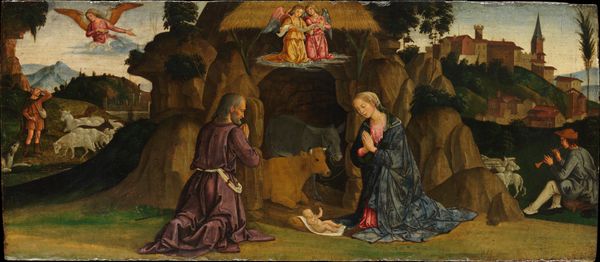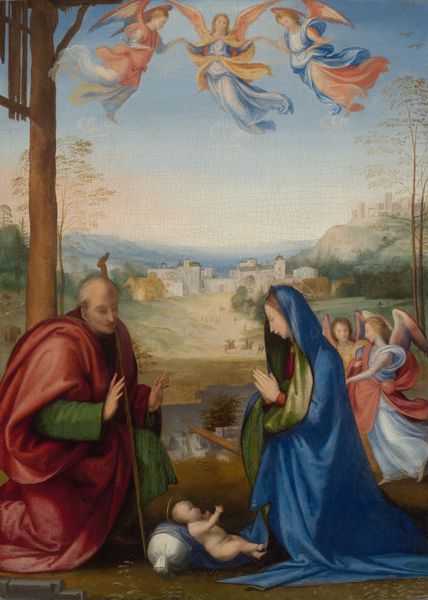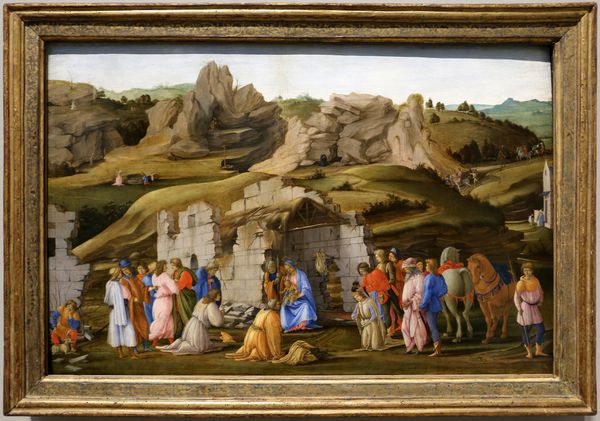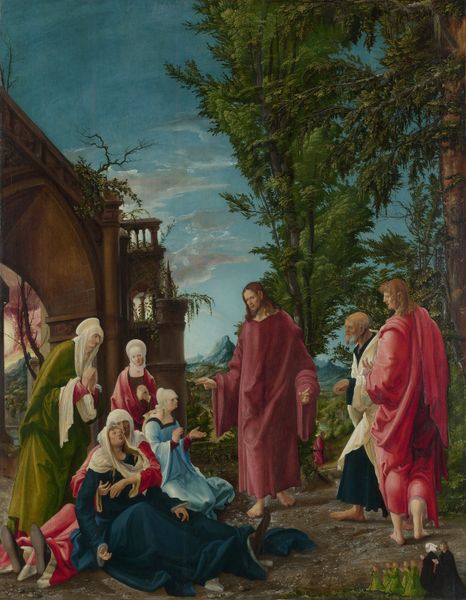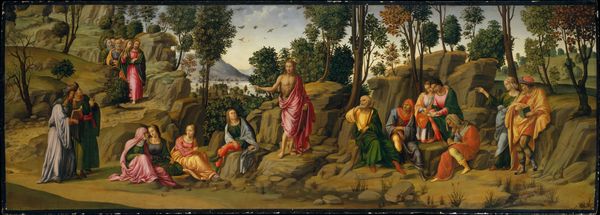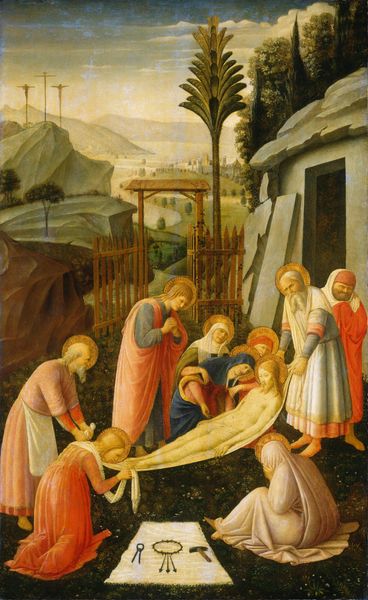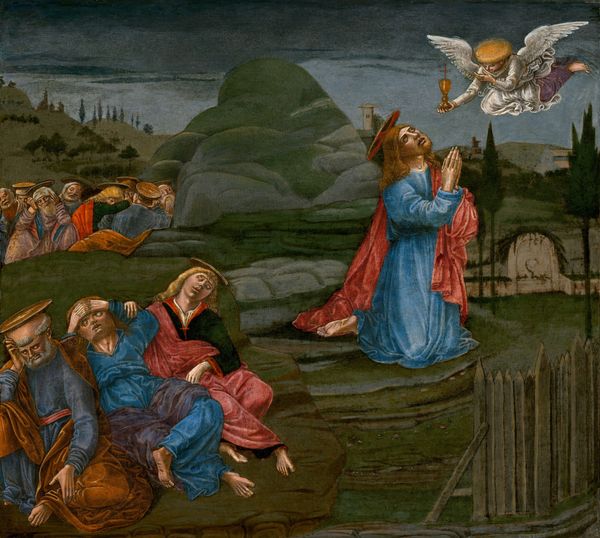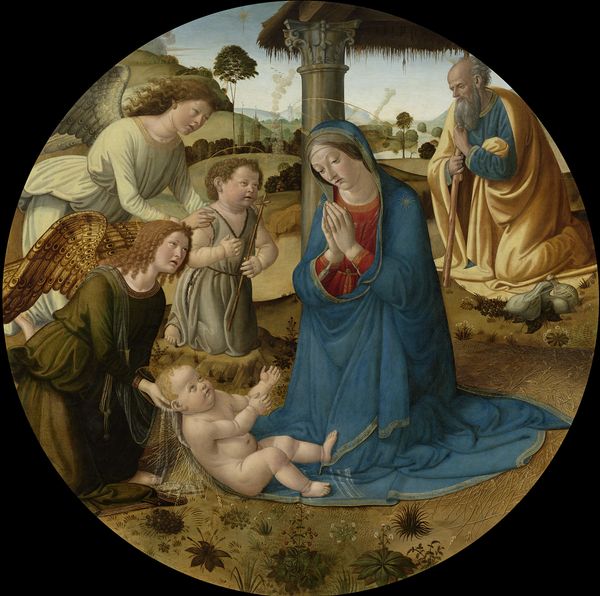
painting, oil-paint
#
painting
#
oil-paint
#
landscape
#
jesus-christ
#
christianity
#
genre-painting
#
history-painting
#
italian-renaissance
#
virgin-mary
#
christ
Dimensions: 90.8 x 110.5 cm
Copyright: Public domain
Curator: Here we have Giorgione’s "The Adoration of the Shepherds," an oil painting dating back to around 1510. What strikes you first about this piece? Editor: The visual dichotomy. A rustic scene juxtaposed with figures in almost operatic attire. It is a strangely intimate but monumental painting, achieved by balancing the earthy realism of the shepherds with the idealized form of the Virgin. Curator: Absolutely. And that dichotomy extends further. The materiality of the piece speaks volumes; oil paint allowed Giorgione to blend colors and create a sfumato effect, which was key to the Renaissance's shift toward more naturalistic depictions. How do you think this focus on material impacts the way viewers in the 16th century, and today, would have encountered the work? Editor: I am drawn to the careful placement of each figure in the composition. Observe the spatial relations. Mary's placement inside the cave creates this beautiful, contained triangle which juxtaposes with the outside. These lines and forms subtly direct the eye toward the infant Christ, the focal point. Curator: And considering the socio-economic factors of the time, one has to wonder, who were the likely patrons, and how would their values have influenced the artistic process? We need to remember that oil painting itself was part of a new culture of wealth and material consumption that empowered patrons who demanded these types of paintings for personal devotion. Editor: I can’t help but get caught up in the color contrast. The cool blues of Mary's robe against the warm hues of the earth creates a balance. The light illuminates certain areas of the piece allowing certain elements to come to the fore. This carefully structured organization conveys the scene's significance. Curator: Yet, it is crucial to remember that Giorgione himself came from a modest background. Does this inform our understanding when examining this artistic production within the framework of class, patronage, and the consumption of luxury goods like paintings? I suspect that might have informed the final effect we can still witness today. Editor: Your point highlights a paradox – it is through mastery of technique and arrangement of colors and figures, the composition sings! We sense piety and the divine not just from the religious iconography but how the structure of the painting reflects and magnifies it. Curator: Indeed, considering these layers certainly gives us a far richer perspective. Editor: I concur! Considering art as a sum of visual parts can lead us into deeper insights.
Comments
No comments
Be the first to comment and join the conversation on the ultimate creative platform.
